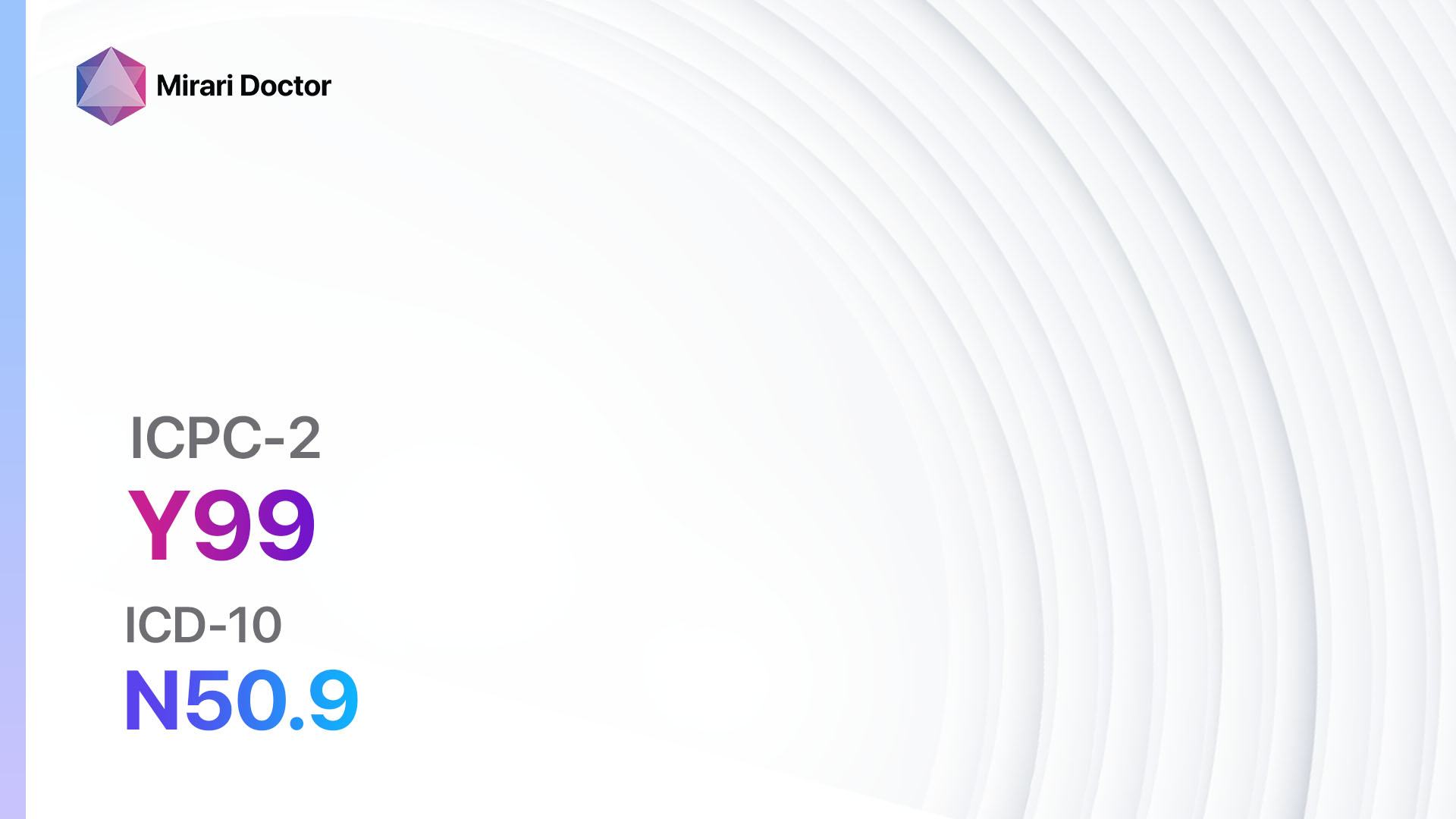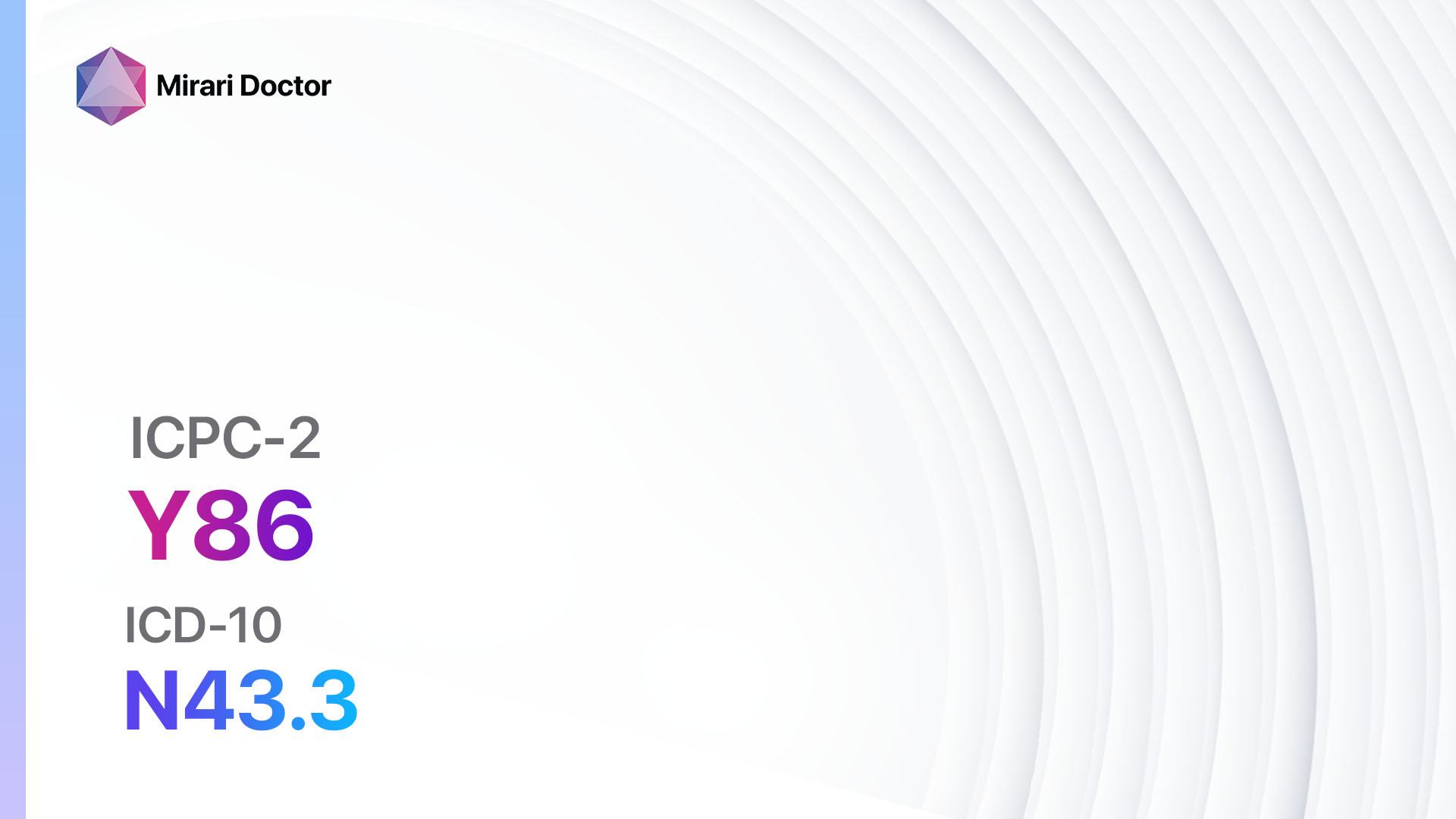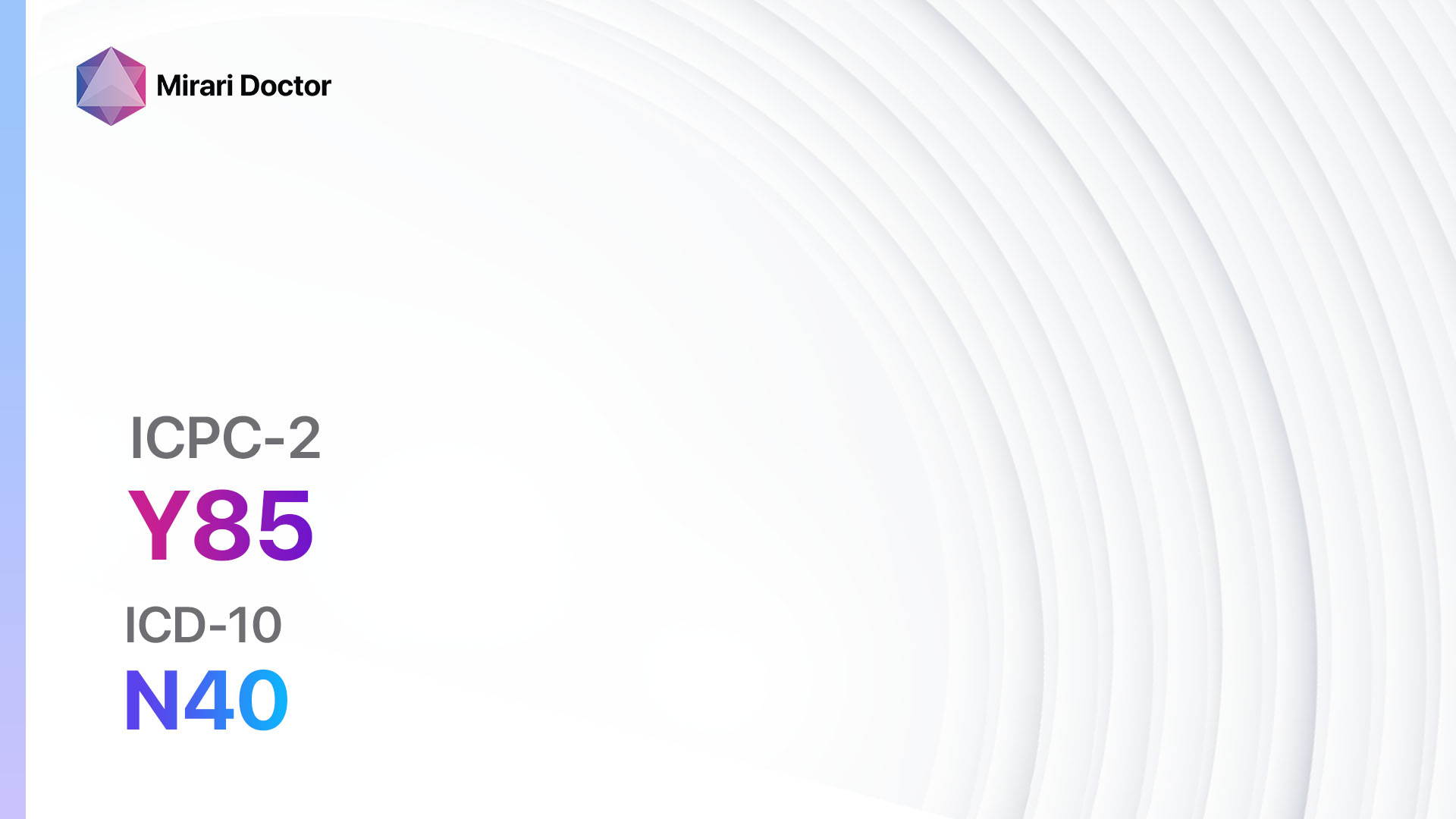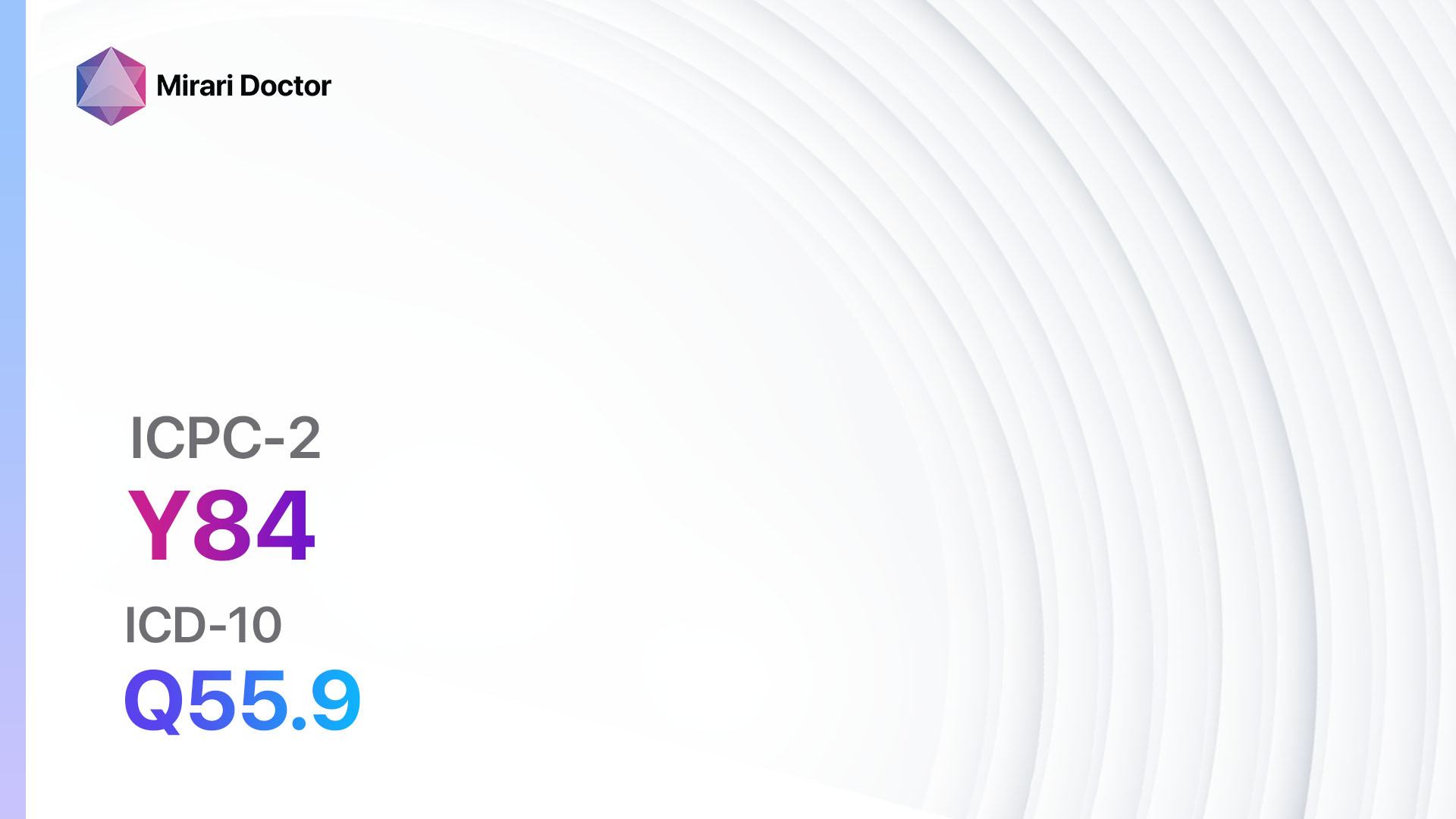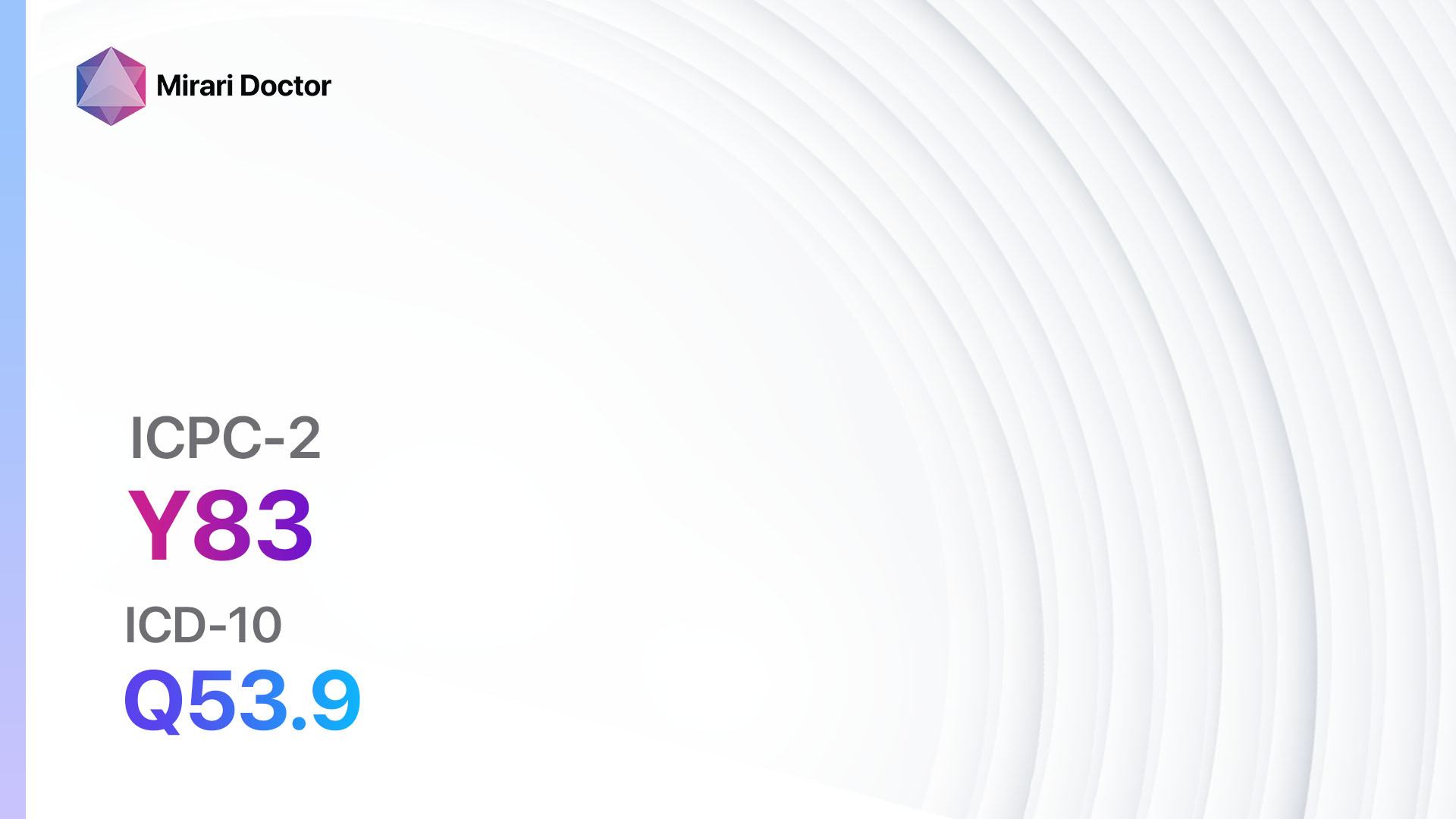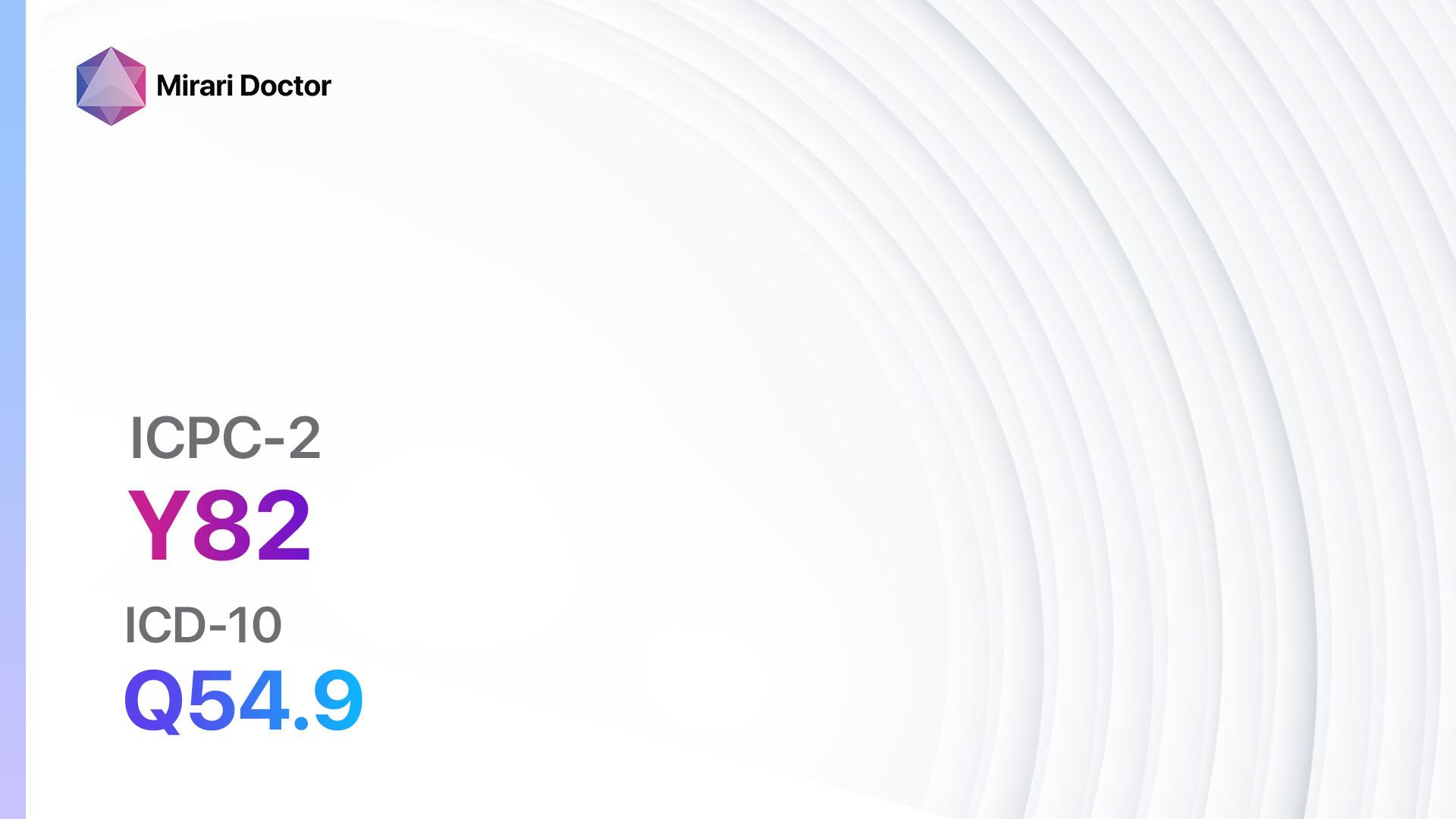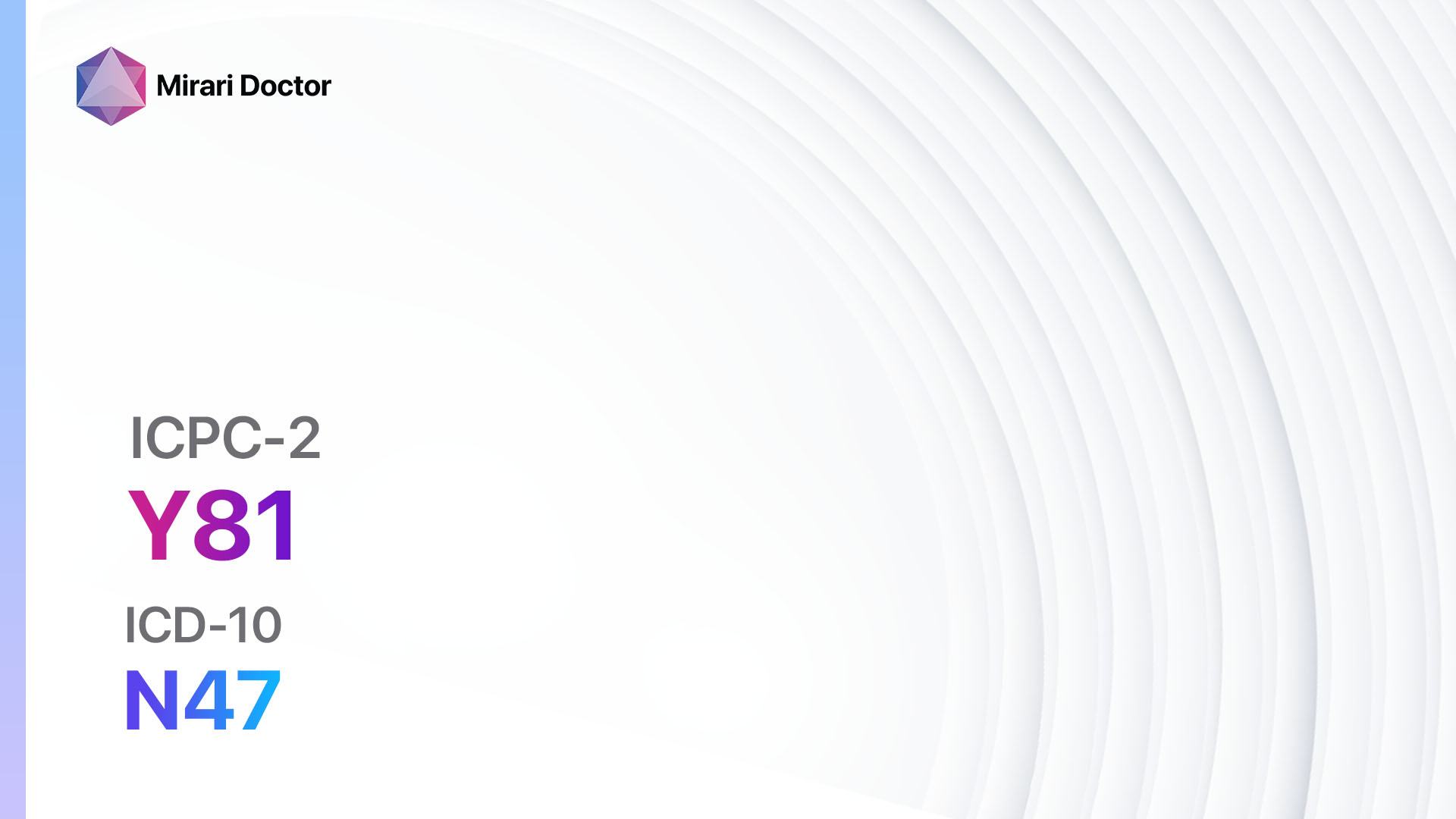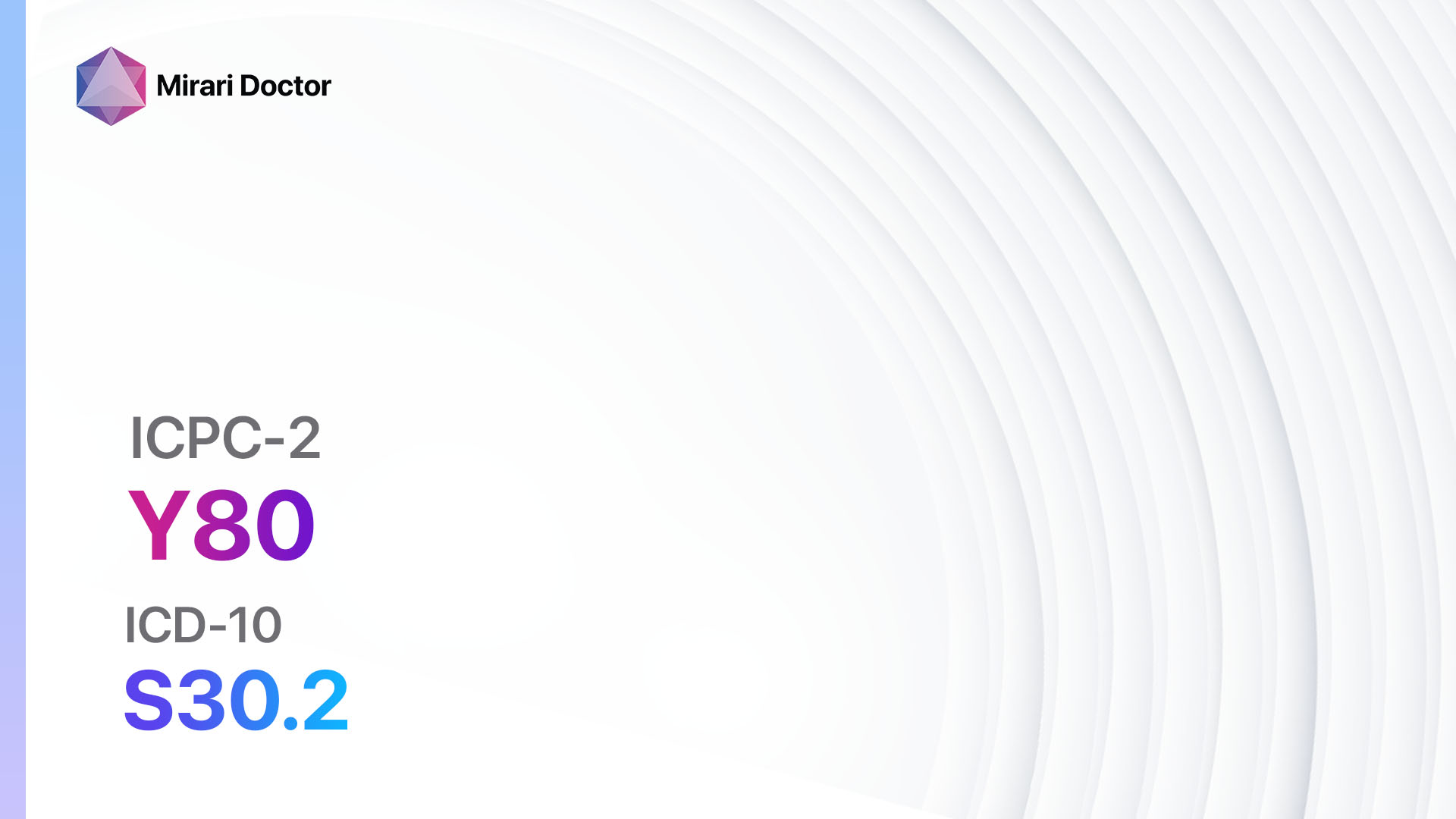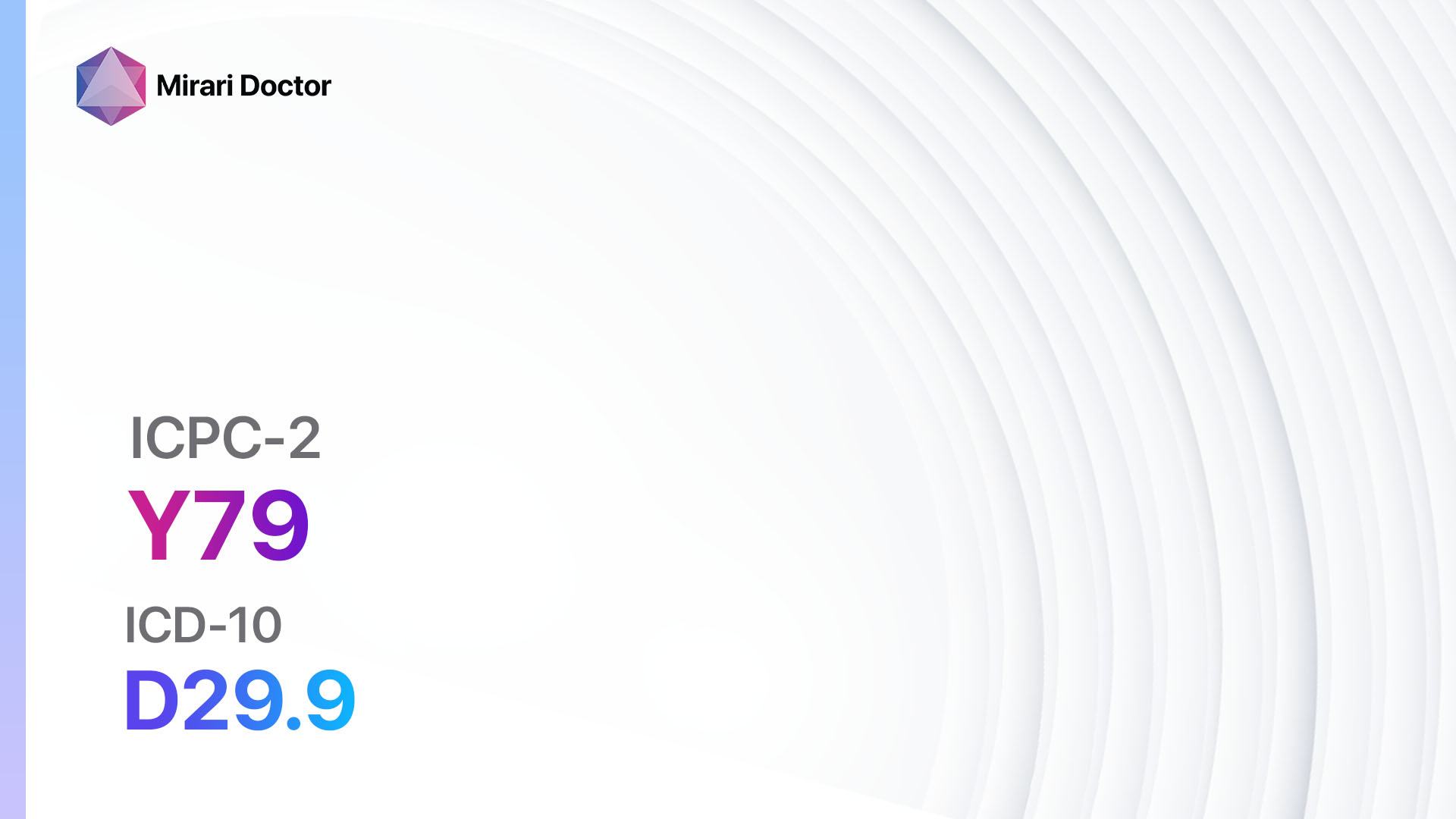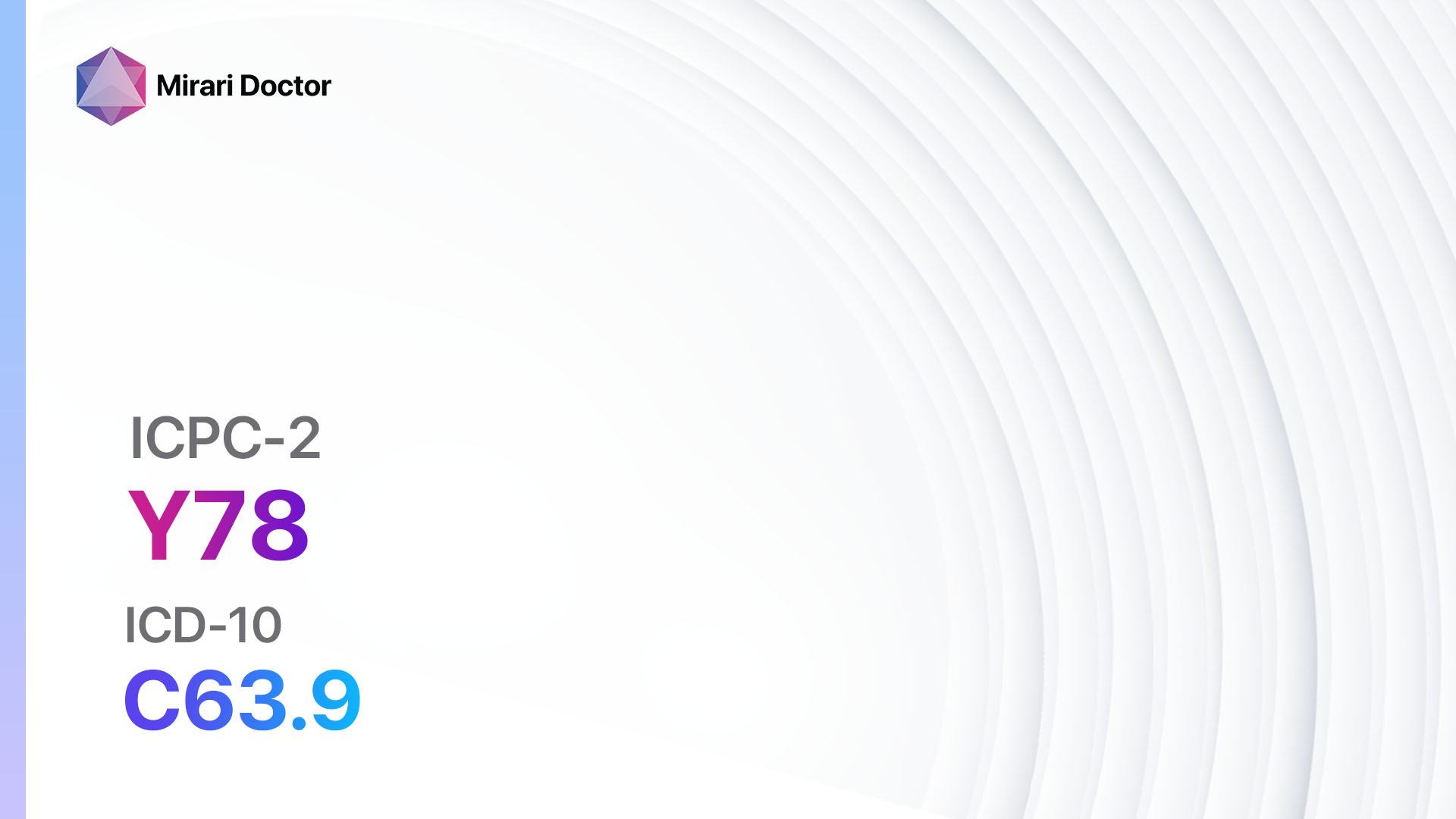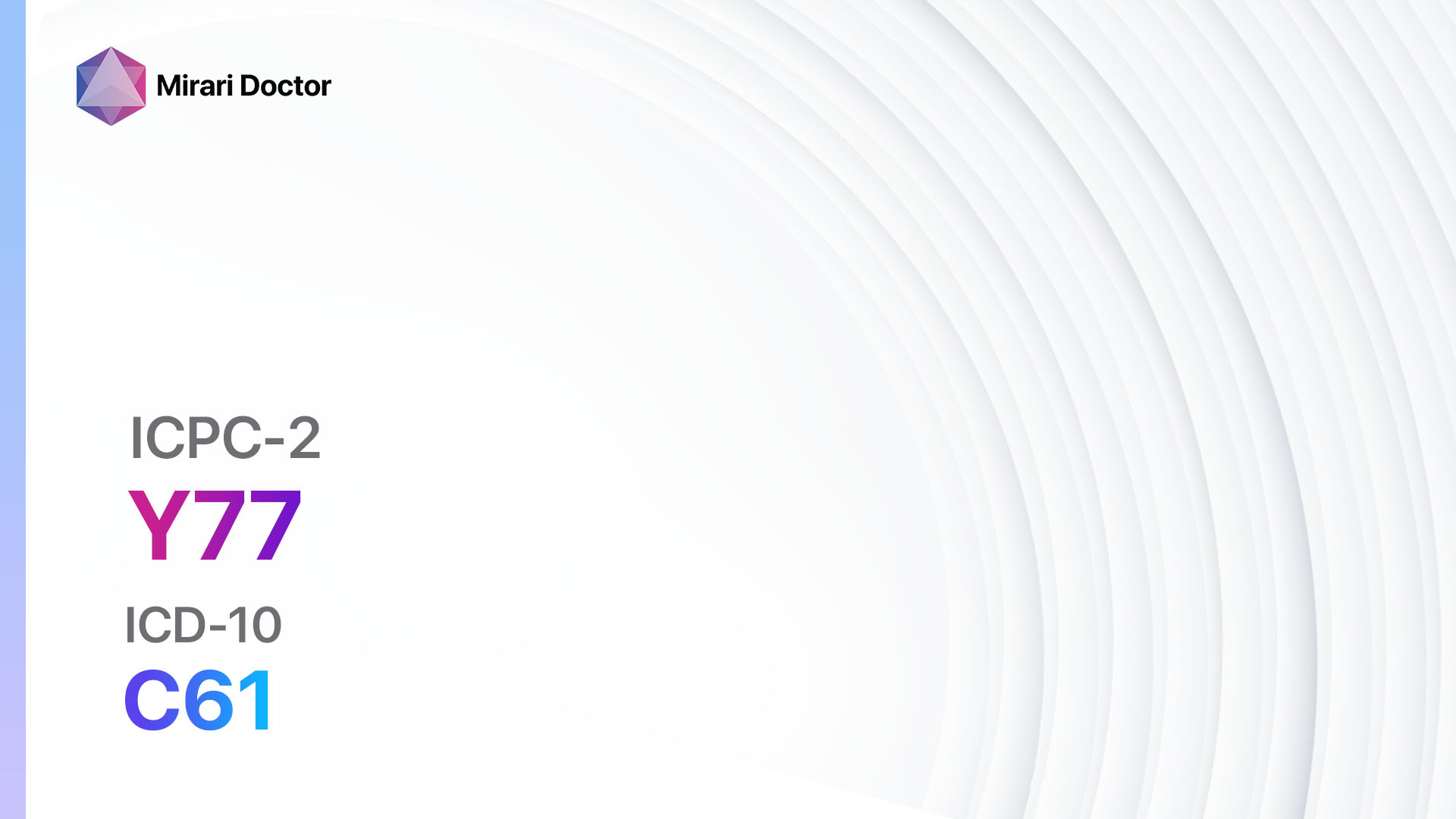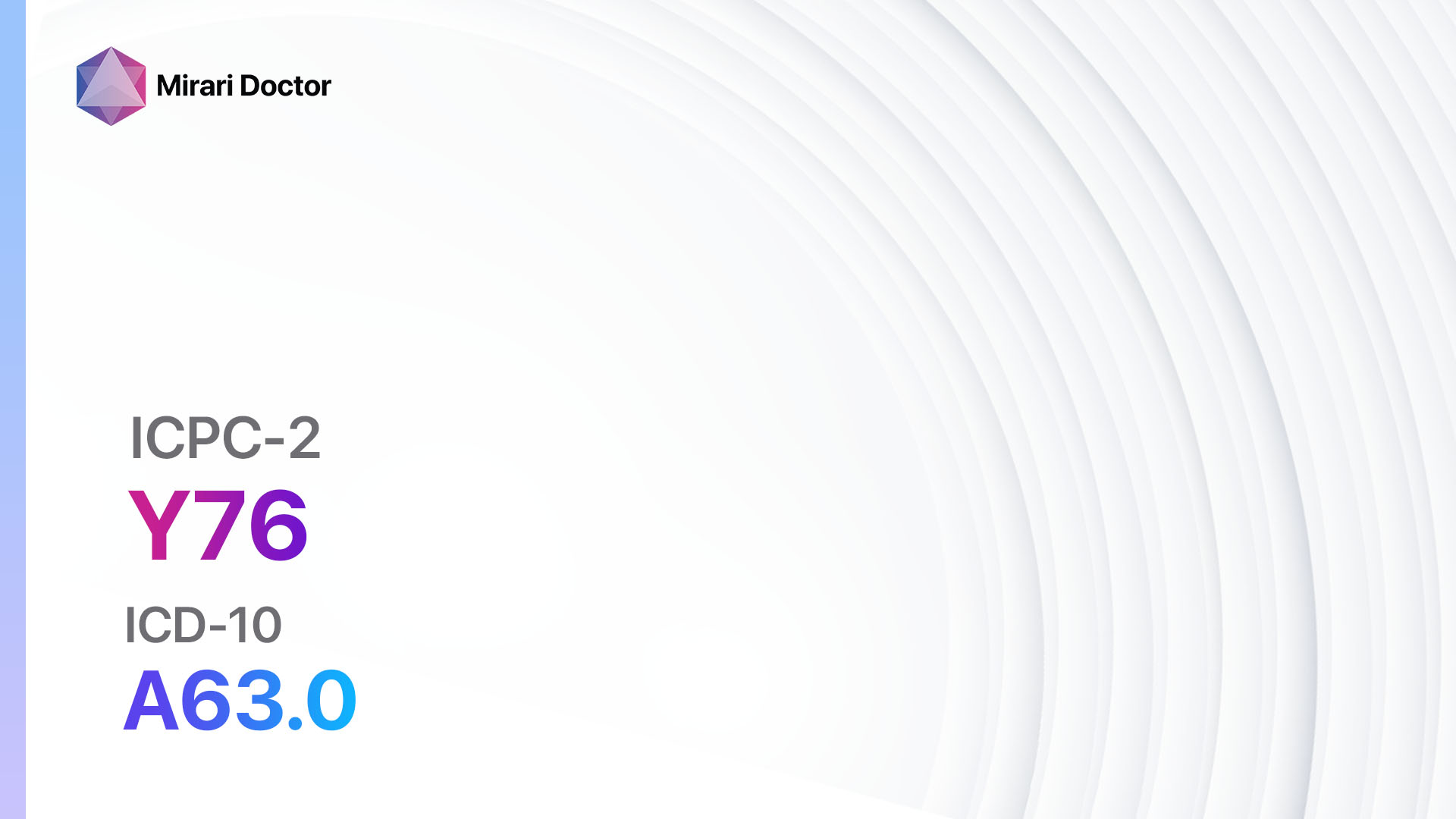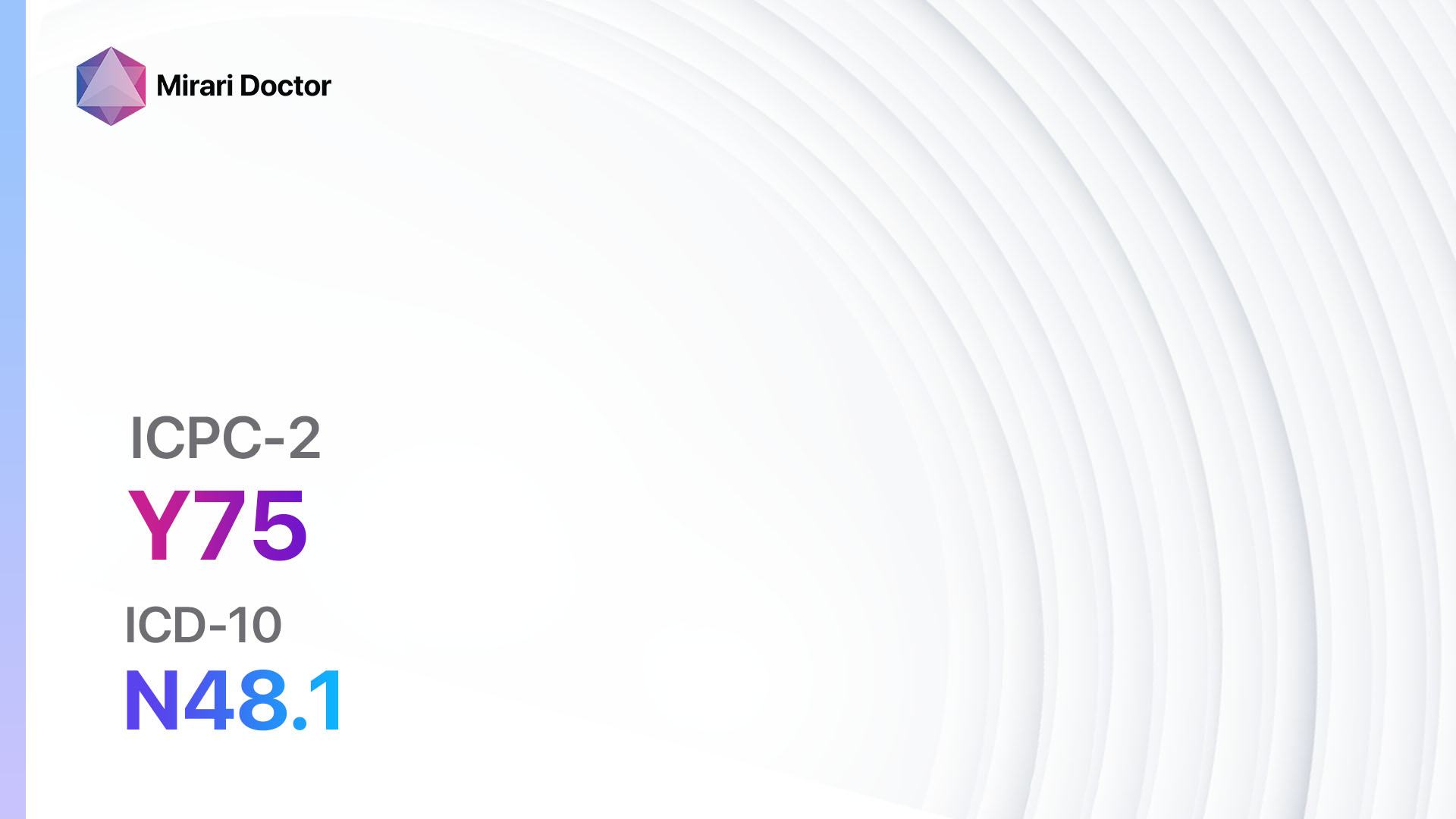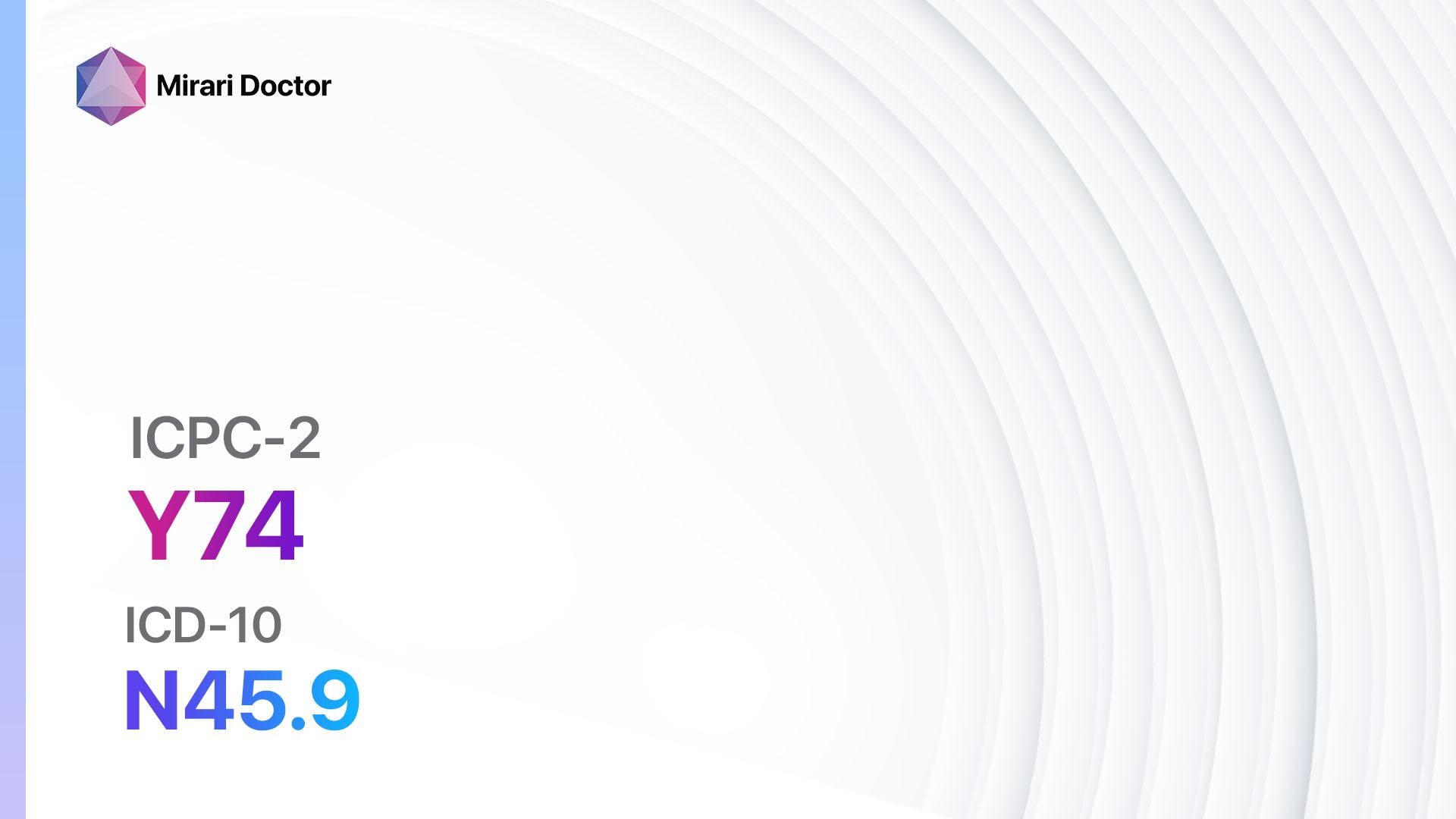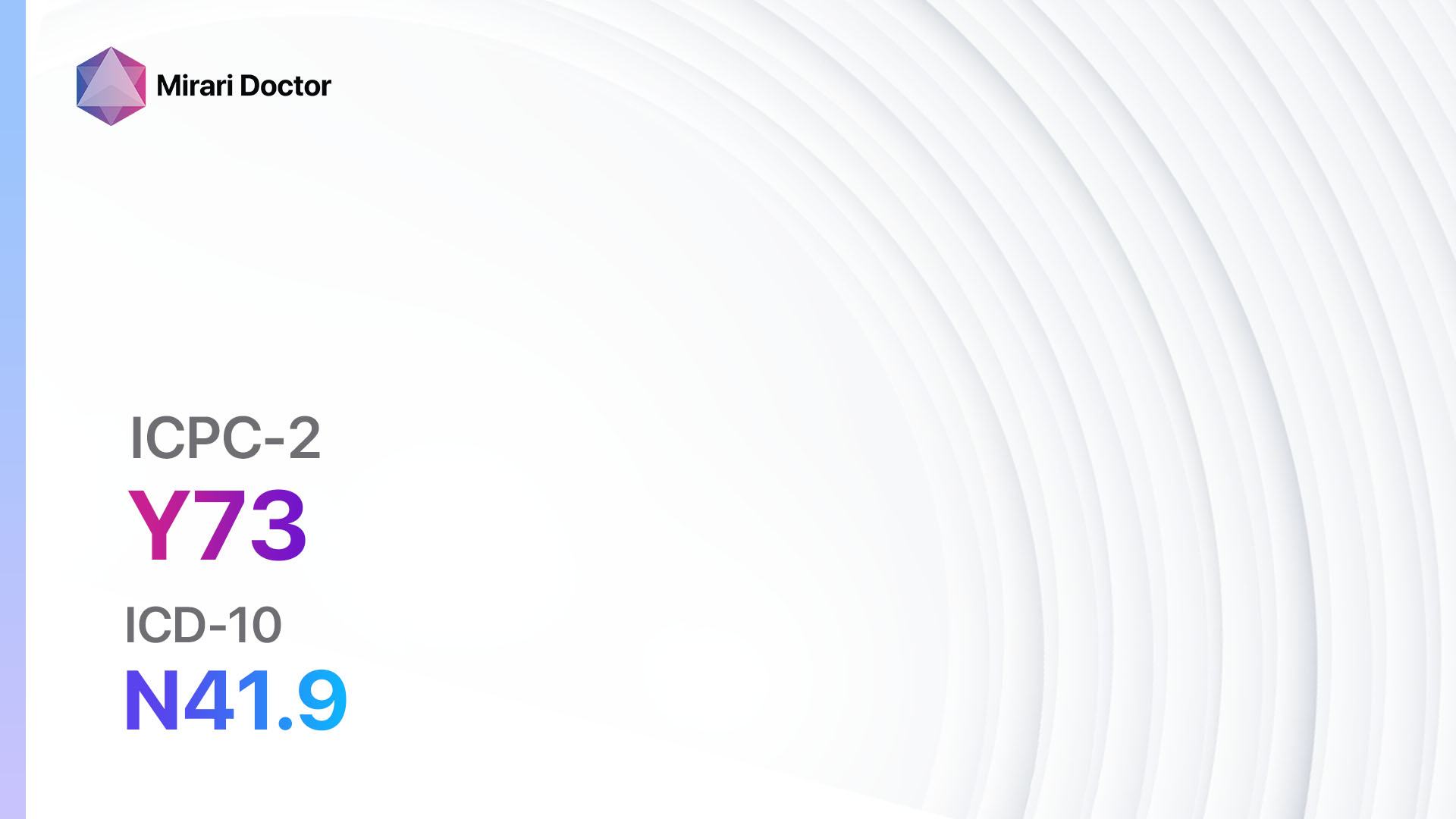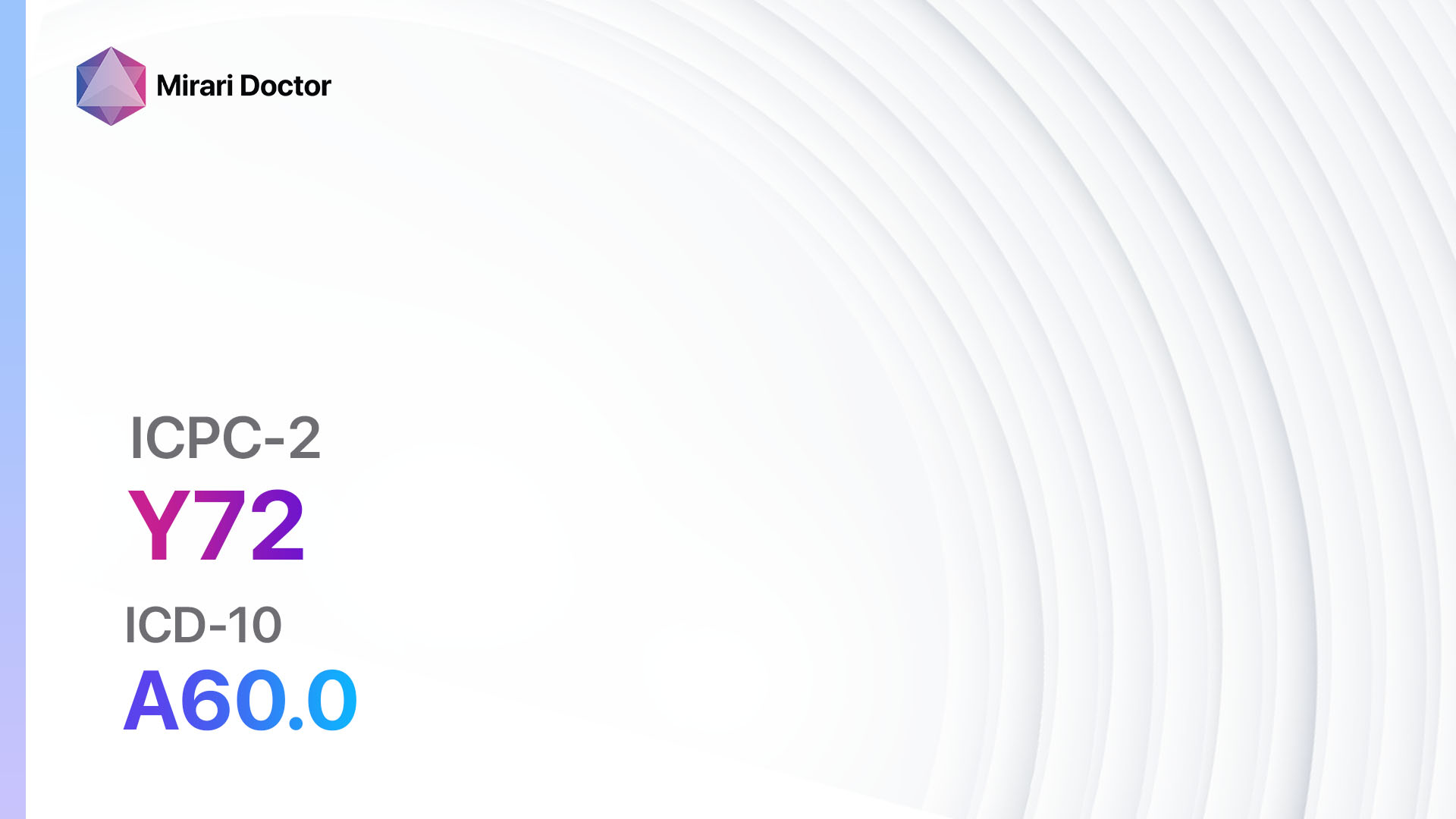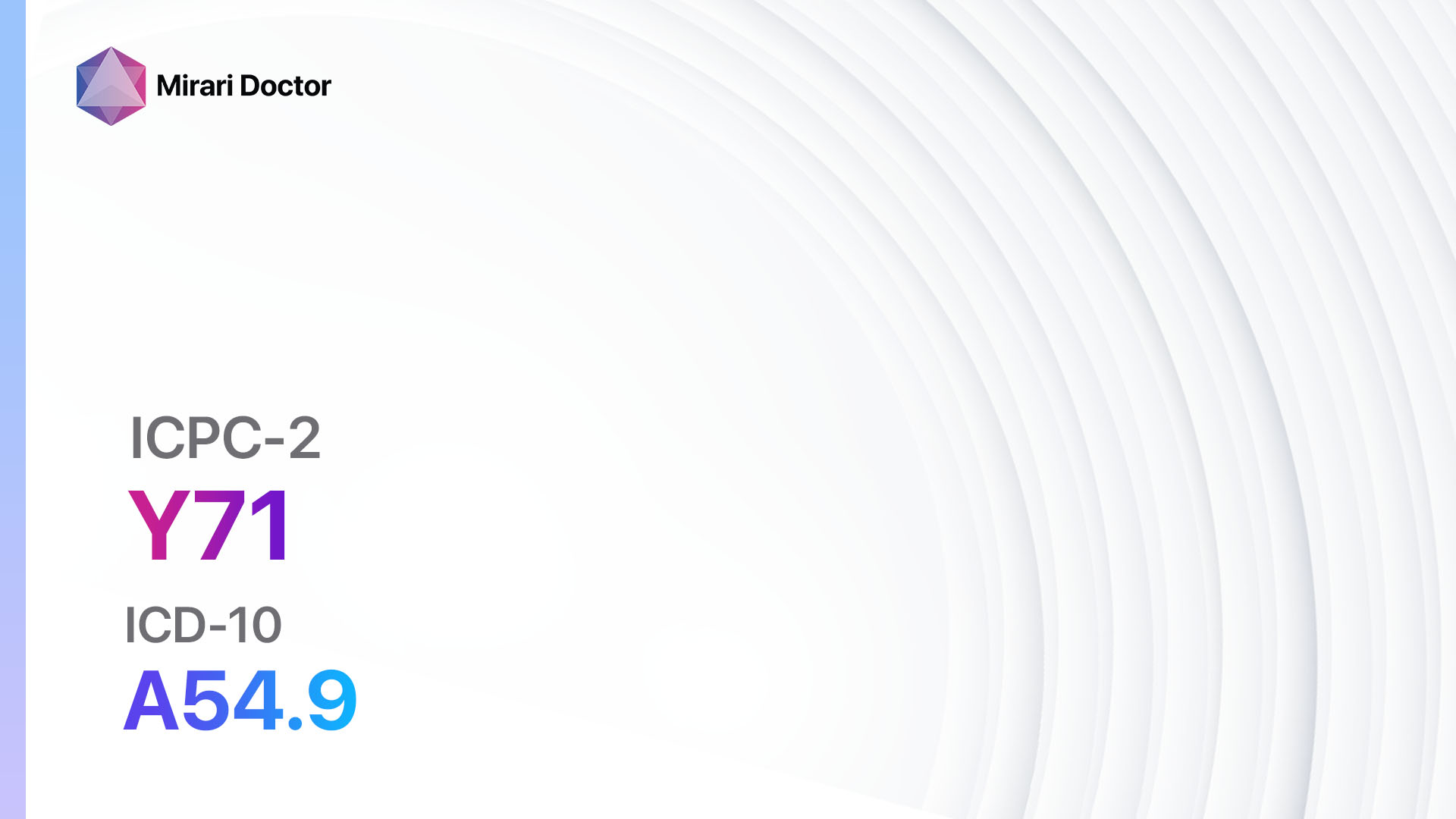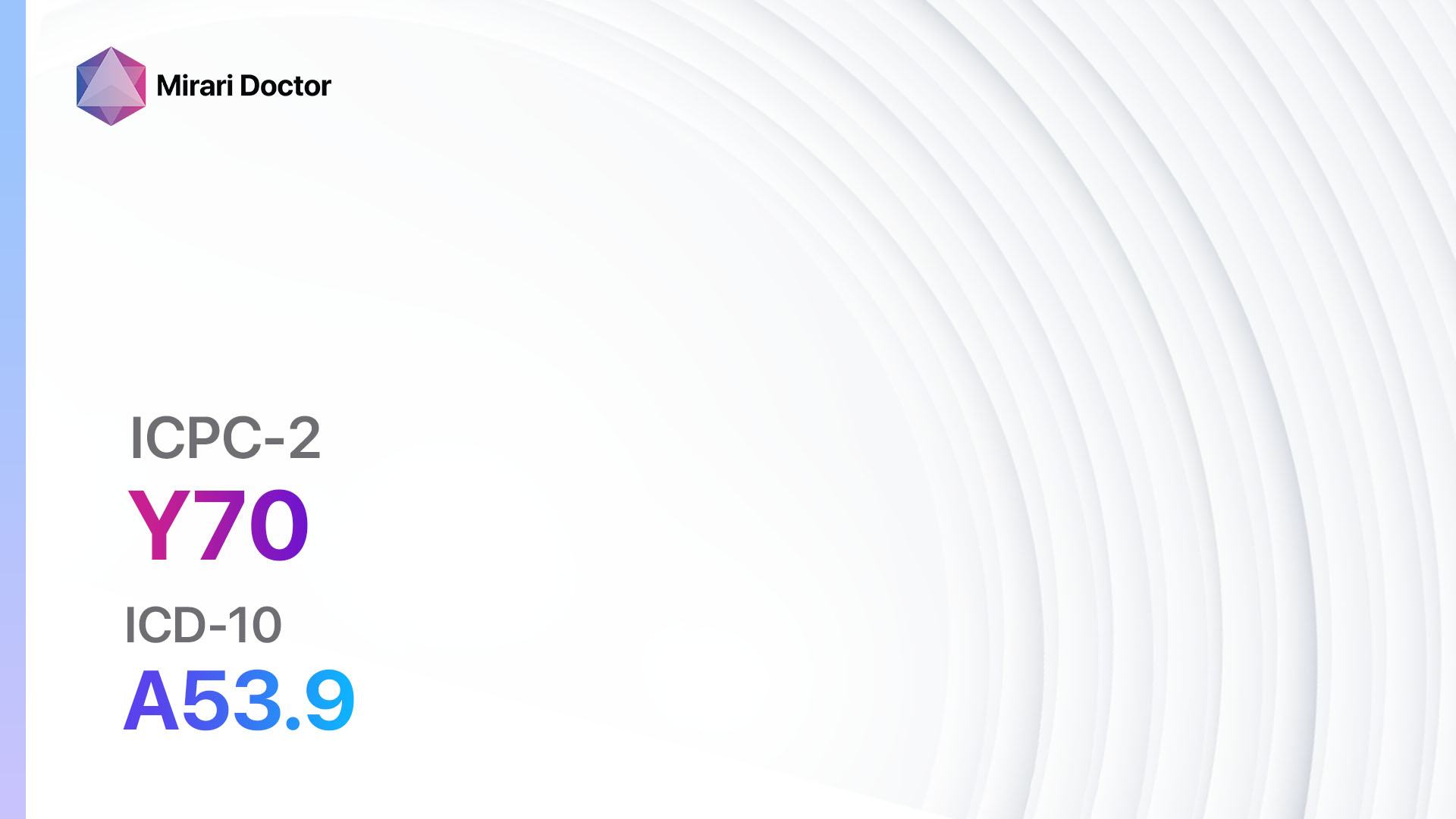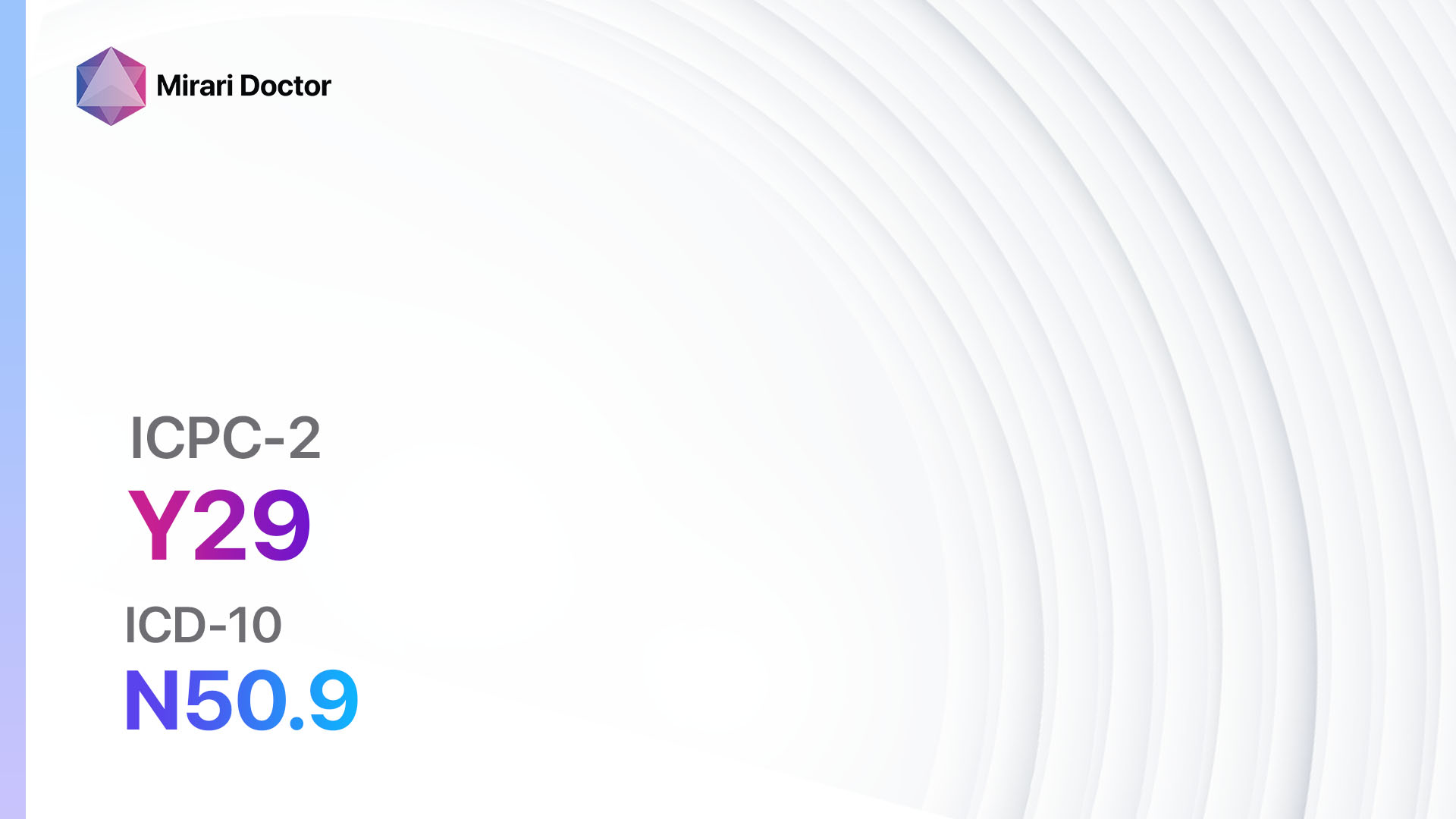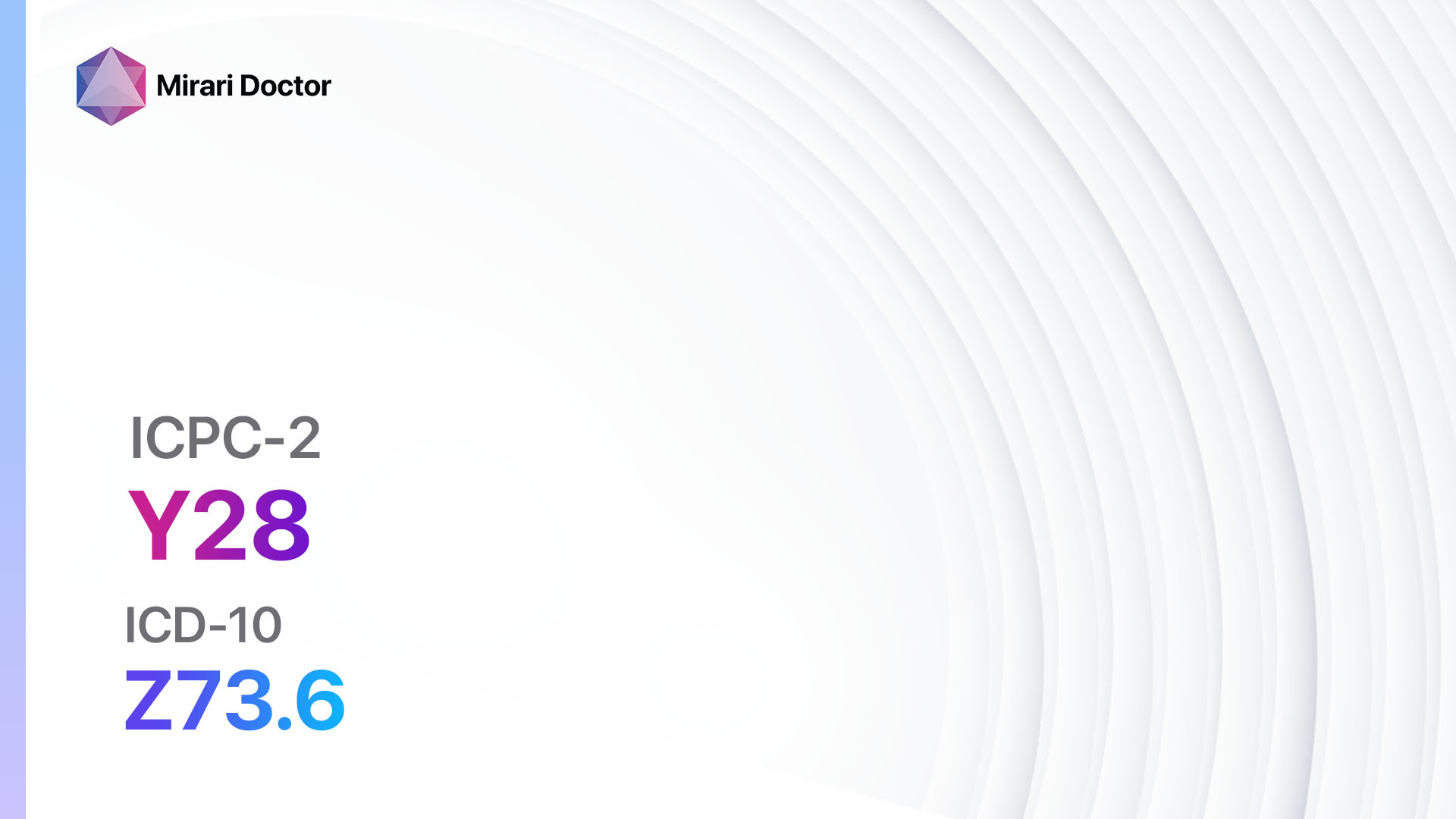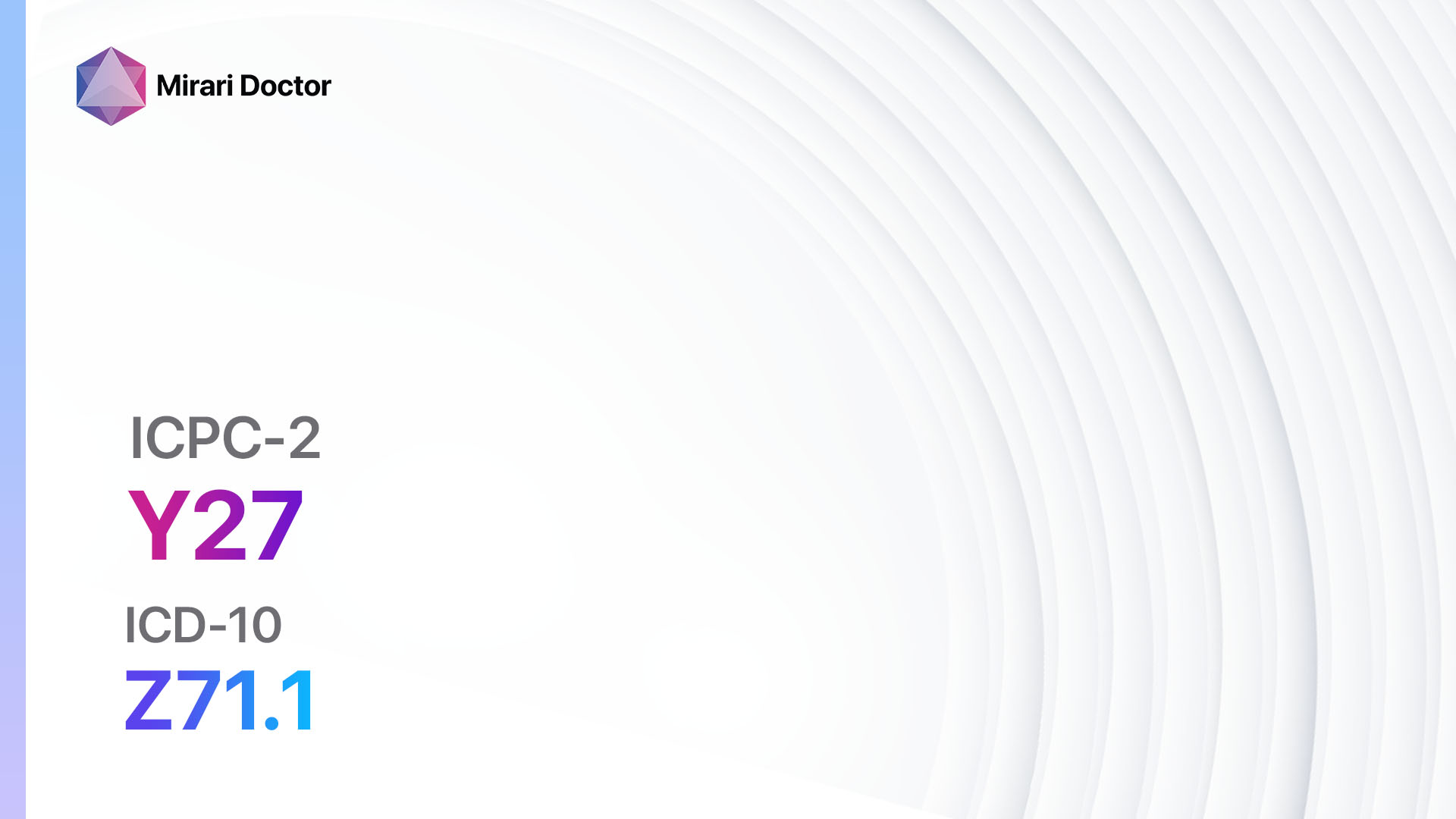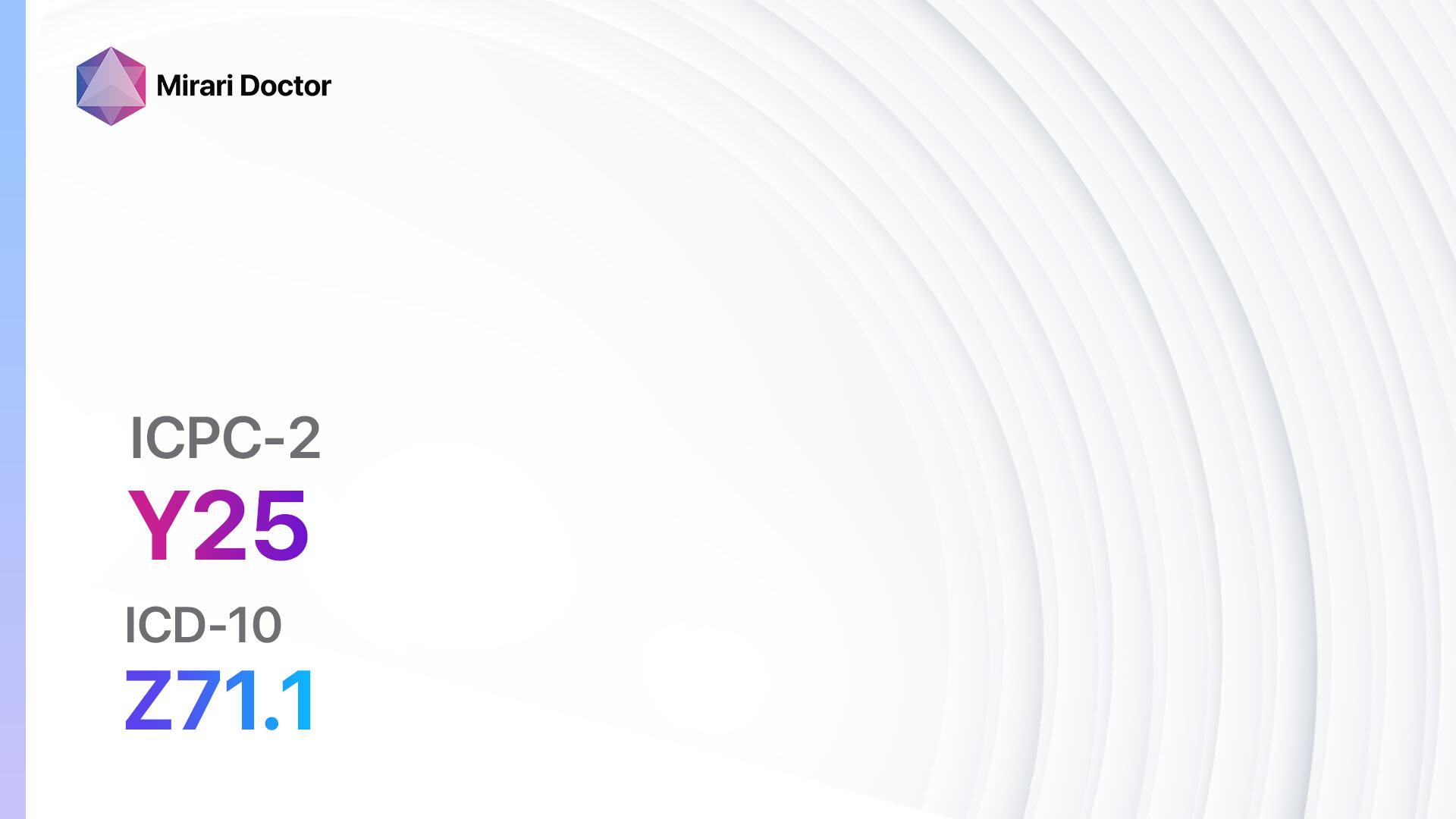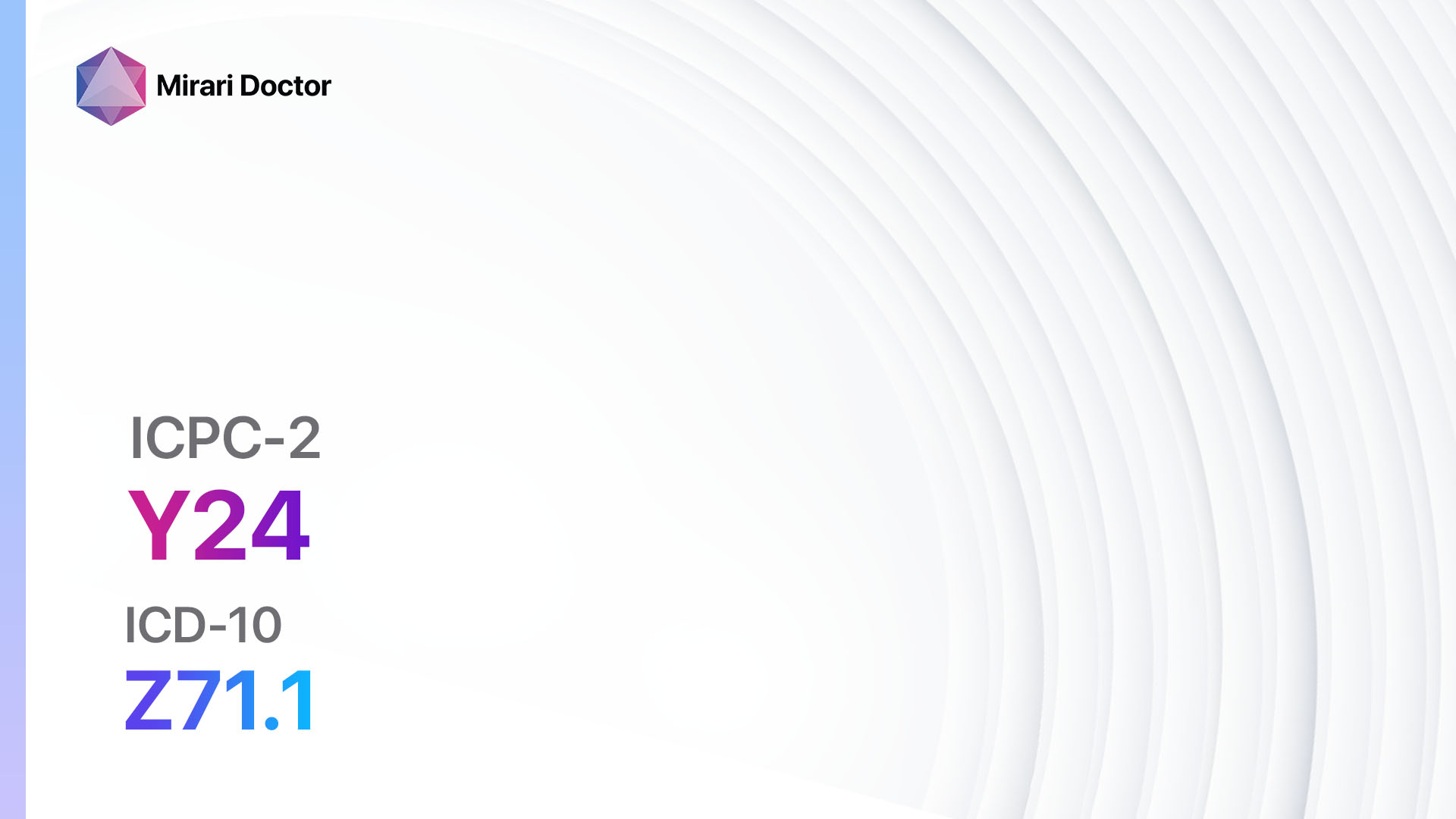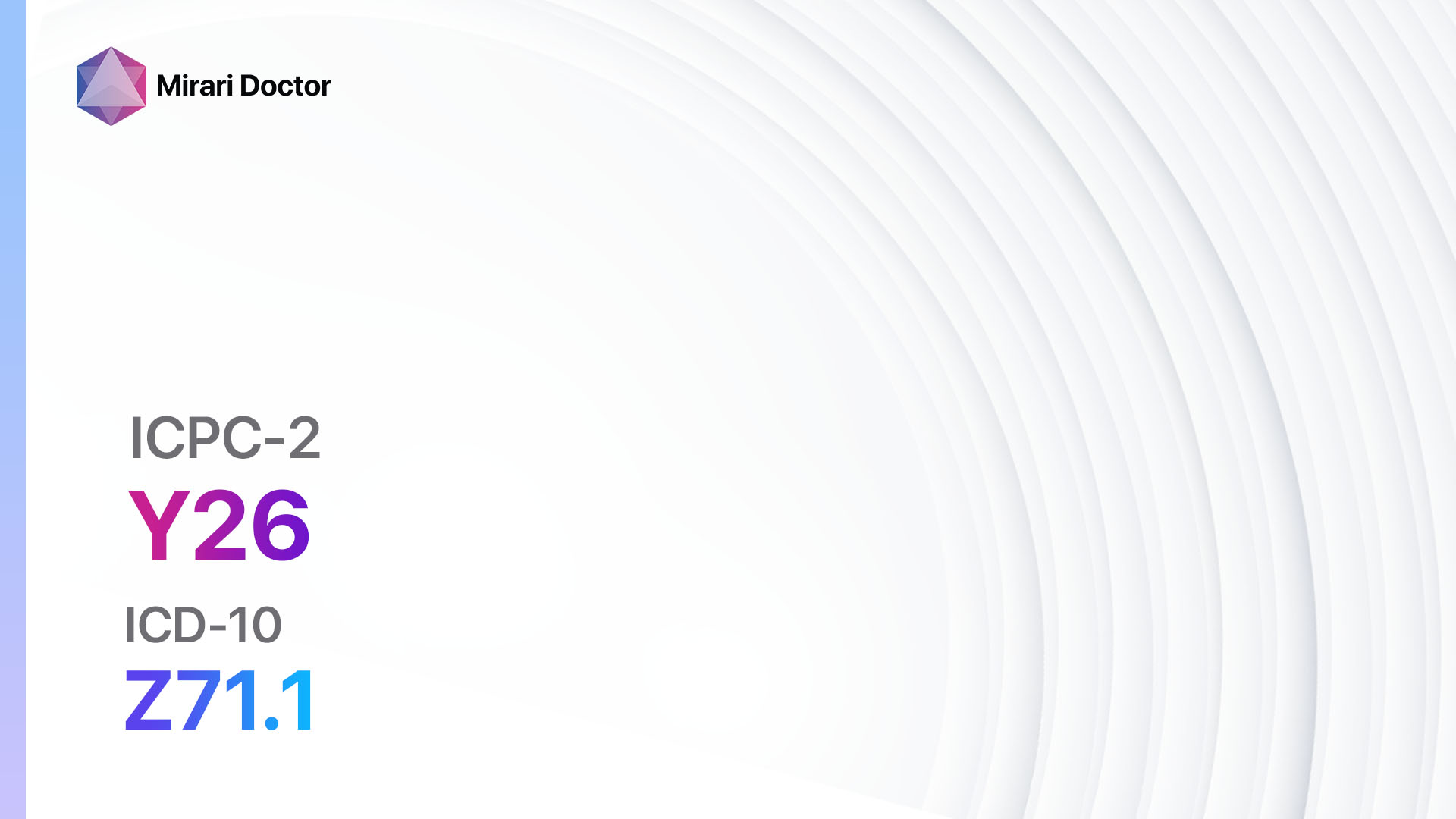
Introduction
Fear of genital cancer in males is a psychological condition characterized by an irrational fear or anxiety related to the possibility of developing cancer in the genital area. This fear can significantly impact a person’s quality of life and mental well-being.[1] The aim of this guide is to provide a comprehensive overview of the diagnostic steps, possible interventions, and patient education for individuals experiencing this fear.
Codes
- ICPC-2 Code: Y26 Fear of genital cancer male
- ICD-10 Code: Z71.1 Person with feared complaint in whom no diagnosis is made[2]
Symptoms
- Fear or anxiety related to the possibility of developing genital cancer
- Persistent worry or preoccupation with symptoms that may indicate cancer, such as lumps, pain, or changes in the genital area[3]
Causes
- Lack of knowledge or understanding about genital cancer
- Previous personal or family history of cancer
- Exposure to risk factors for genital cancer, such as smoking, HPV infection, or unprotected sexual activity[4]
Diagnostic Steps
Medical History
- Gather information about the patient’s personal and family history of cancer, including any previous diagnoses of genital or other types of cancer.
- Inquire about the patient’s knowledge and understanding of genital cancer and any specific concerns or fears they may have.
- Assess the patient’s exposure to risk factors for genital cancer, such as smoking, HPV infection, or unprotected sexual activity.
- Evaluate the patient’s psychological history, including any previous anxiety or mental health disorders.[5]
Physical Examination
- Perform a thorough physical examination of the genital area, looking for any visible abnormalities, such as lumps, lesions, or changes in skin color or texture.
- Check for enlarged lymph nodes in the groin area, which may indicate the spread of cancer.
- Assess other areas of the body for signs of cancer, as some types of genital cancer can metastasize to other organs.[6]
Laboratory Tests
- Conduct blood tests to assess general health and identify any markers that may indicate the presence of cancer, such as elevated tumor markers.
- Perform specialized assays, such as HPV testing, to determine the presence of HPV infection, which is a risk factor for genital cancer.
Diagnostic Imaging
- Discuss the potential use of imaging modalities, such as ultrasound or MRI, to visualize and assess the genital area for any abnormalities or signs of cancer.
- Consider the use of CT scans or PET scans to evaluate the extent of cancer spread, if indicated.[8]
Other Tests
- Consider a biopsy of any suspicious lesions or lumps in the genital area to definitively diagnose or rule out cancer.
- Consult with specialists, such as urologists or oncologists, for further evaluation and guidance based on the patient’s clinical presentation.[9]
Follow-up and Patient Education
- Schedule regular follow-up appointments to monitor any changes or new symptoms in the genital area.
- Provide education and resources to the patient about genital cancer, including risk factors, prevention strategies, and signs and symptoms to watch for.
- Offer psychological support, such as counseling or support groups, to help the patient address their fear and anxiety related to genital cancer.[10]
Possible Interventions
Traditional Interventions
Medications:
Top 5 drugs for Fear of genital cancer male:
- Selective serotonin reuptake inhibitors (SSRIs) (e.g., Fluoxetine, Sertraline):
- Cost : Generic versions can be $10-$40/month.
- Contraindications : Hypersensitivity to SSRIs, concurrent use with MAOI.
- Side effects : Nausea, headache, sexual dysfunction.
- Severe side effects : Serotonin syndrome, suicidal thoughts.
- Drug interactions: MAOIs, other serotonergic drugs.
- Warning : May take several weeks for full effect.
- Benzodiazepines (e.g., Alprazolam, Lorazepam):
- Cost : Generic versions can be $10-$30/month.
- Contraindications : Acute narrow-angle glaucoma, pregnancy.
- Side effects : Drowsiness, dizziness, confusion.
- Severe side effects : Respiratory depression, dependence.
- Drug interactions: CNS depressants, grapefruit juice.
- Warning : May cause drowsiness and impair cognitive function.
- Beta-blockers (e.g., Propranolol, Atenolol):
- Cost : Generic versions can be $10-$30/month.
- Contraindications : Severe bradycardia, heart block.
- Side effects : Fatigue, dizziness, bradycardia.
- Severe side effects : Bronchospasm, heart failure.
- Drug interactions: Calcium channel blockers, insulin.
- Warning : Should not be abruptly stopped.
- Antidepressants (e.g., Amitriptyline, Venlafaxine):
- Cost : Generic versions can be $10-$40/month.
- Contraindications : Hypersensitivity to antidepressants, concurrent use with MAOI.
- Side effects : Dry mouth, constipation, drowsiness.
- Severe side effects : Serotonin syndrome, suicidal thoughts.
- Drug interactions: MAOIs, other serotonergic drugs.
- Warning : May take several weeks for full effect.
- Anxiolytics (e.g., Buspirone, Hydroxyzine):
- Cost : Generic versions can be $10-$30/month.
- Contraindications : Hypersensitivity to anxiolytics, pregnancy.
- Side effects : Drowsiness, dizziness, headache.
- Severe side effects : Respiratory depression, dependence.
- Drug interactions: CNS depressants, grapefruit juice.
- Warning : May cause drowsiness and impair cognitive function.
Alternative Drugs:
- Cognitive-behavioral therapy (CBT): A form of psychotherapy that aims to change negative thought patterns and behaviors associated with fear and anxiety. Cost: $100-$200 per session.
- Mindfulness-based stress reduction (MBSR): A practice that combines meditation, yoga, and body awareness to reduce stress and promote emotional well-being. Cost: $100-$200 per session.
- Support groups: Joining a support group can provide a sense of community and support from others who are experiencing similar fears or anxieties. Cost: Varies depending on the specific group.
Lifestyle Interventions
- Encourage regular exercise, as physical activity has been shown to reduce anxiety and improve overall mental well-being. Cost: Varies depending on the chosen activity.
- Promote a healthy diet rich in fruits, vegetables, and whole grains, as nutrition plays a crucial role in maintaining mental health. Cost: Varies depending on food choices.
- Recommend stress management techniques, such as meditation, deep breathing exercises, or yoga, to help reduce anxiety and promote relaxation. Cost: Varies depending on the chosen method.
- Suggest engaging in hobbies or activities that bring joy and provide a distraction from fear or anxiety. Cost: Varies depending on the chosen activity.
It is important to note that the cost ranges provided are approximate and may vary depending on the location and availability of the interventions. It is recommended to consult with healthcare professionals for personalized recommendations and cost estimates.
Mirari Cold Plasma Alternative Intervention
Understanding Mirari Cold Plasma
- Safe and Non-Invasive Treatment: Mirari Cold Plasma is a safe and non-invasive treatment option for various skin conditions. It does not require incisions, minimizing the risk of scarring, bleeding, or tissue damage.
- Efficient Extraction of Foreign Bodies: Mirari Cold Plasma facilitates the removal of foreign bodies from the skin by degrading and dissociating organic matter, allowing easier access and extraction.
- Pain Reduction and Comfort: Mirari Cold Plasma has a local analgesic effect, providing pain relief during the treatment, making it more comfortable for the patient.
- Reduced Risk of Infection: Mirari Cold Plasma has antimicrobial properties, effectively killing bacteria and reducing the risk of infection.
- Accelerated Healing and Minimal Scarring: Mirari Cold Plasma stimulates wound healing and tissue regeneration, reducing healing time and minimizing the formation of scars.
Mirari Cold Plasma Prescription
Video instructions for using Mirari Cold Plasma Device – Y26 Fear of genital cancer male (ICD-10:Z71.1)
| Mild | Moderate | Severe |
| Mode setting: 1 (Infection) Location: 0 (Localized) Morning: 15 minutes, Evening: 15 minutes |
Mode setting: 1 (Infection) Location: 0 (Localized) Morning: 30 minutes, Lunch: 30 minutes, Evening: 30 minutes |
Mode setting: 1 (Infection) Location: 0 (Localized) Morning: 30 minutes, Lunch: 30 minutes, Evening: 30 minutes |
| Mode setting: 2 (Wound Healing) Location: 0 (Localized) Morning: 15 minutes, Evening: 15 minutes |
Mode setting: 2 (Wound Healing) Location: 0 (Localized) Morning: 30 minutes, Lunch: 30 minutes, Evening: 30 minutes |
Mode setting: 2 (Wound Healing) Location: 0 (Localized) Morning: 30 minutes, Lunch: 30 minutes, Evening: 30 minutes |
| Mode setting: 3 (Antiviral Therapy) Location: 0 (Localized) Morning: 15 minutes, Evening: 15 minutes |
Mode setting: 3 (Antiviral Therapy) Location: 0 (Localized) Morning: 30 minutes, Lunch: 30 minutes, Evening: 30 minutes |
Mode setting: 3 (Antiviral Therapy) Location: 0 (Localized) Morning: 30 minutes, Lunch: 30 minutes, Evening: 30 minutes |
| Mode setting: 7 (Immunotherapy) Location: 1 (Sacrum) Morning: 15 minutes, Evening: 15 minutes |
Mode setting: 7 (Immunotherapy) Location: 1 (Sacrum) Morning: 30 minutes, Lunch: 30 minutes, Evening: 30 minutes |
Mode setting: 7 (Immunotherapy) Location: 1 (Sacrum) Morning: 30 minutes, Lunch: 30 minutes, Evening: 30 minutes |
| Total Morning: 60 minutes approx. $10 USD, Evening: 60 minutes approx. $10 USD |
Total Morning: 120 minutes approx. $20 USD, Lunch: 120 minutes approx. $20 USD, Evening: 120 minutes approx. $20 USD, |
Total Morning: 120 minutes approx. $20 USD, Lunch: 120 minutes approx. $20 USD, Evening: 120 minutes approx. $20 USD, |
| Usual treatment for 7-60 days approx. $140 USD – $1200 USD | Usual treatment for 6-8 weeks approx. $2,520 USD – $3,360 USD |
Usual treatment for 3-6 months approx. $5,400 USD – $10,800 USD
|
 |
|
Use the Mirari Cold Plasma device to treat Fear of genital cancer male effectively.
WARNING: MIRARI COLD PLASMA IS DESIGNED FOR THE HUMAN BODY WITHOUT ANY ARTIFICIAL OR THIRD PARTY PRODUCTS. USE OF OTHER PRODUCTS IN COMBINATION WITH MIRARI COLD PLASMA MAY CAUSE UNPREDICTABLE EFFECTS, HARM OR INJURY. PLEASE CONSULT A MEDICAL PROFESSIONAL BEFORE COMBINING ANY OTHER PRODUCTS WITH USE OF MIRARI.
Step 1: Cleanse the Skin
- Start by cleaning the affected area of the skin with a gentle cleanser or mild soap and water. Gently pat the area dry with a clean towel.
Step 2: Prepare the Mirari Cold Plasma device
- Ensure that the Mirari Cold Plasma device is fully charged or has fresh batteries as per the manufacturer’s instructions. Make sure the device is clean and in good working condition.
- Switch on the Mirari device using the power button or by following the specific instructions provided with the device.
- Some Mirari devices may have adjustable settings for intensity or treatment duration. Follow the manufacturer’s instructions to select the appropriate settings based on your needs and the recommended guidelines.
Step 3: Apply the Device
- Place the Mirari device in direct contact with the affected area of the skin. Gently glide or hold the device over the skin surface, ensuring even coverage of the area experiencing.
- Slowly move the Mirari device in a circular motion or follow a specific pattern as indicated in the user manual. This helps ensure thorough treatment coverage.
Step 4: Monitor and Assess:
- Keep track of your progress and evaluate the effectiveness of the Mirari device in managing your Fear of genital cancer male. If you have any concerns or notice any adverse reactions, consult with your health care professional.
Note
This guide is for informational purposes only and should not replace the advice of a medical professional. Always consult with your healthcare provider or a qualified medical professional for personal advice, diagnosis, or treatment. Do not solely rely on the information presented here for decisions about your health. Use of this information is at your own risk. The authors of this guide, nor any associated entities or platforms, are not responsible for any potential adverse effects or outcomes based on the content.
Mirari Cold Plasma System Disclaimer
- Purpose: The Mirari Cold Plasma System is a Class 2 medical device designed for use by trained healthcare professionals. It is registered for use in Thailand and Vietnam. It is not intended for use outside of these locations.
- Informational Use: The content and information provided with the device are for educational and informational purposes only. They are not a substitute for professional medical advice or care.
- Variable Outcomes: While the device is approved for specific uses, individual outcomes can differ. We do not assert or guarantee specific medical outcomes.
- Consultation: Prior to utilizing the device or making decisions based on its content, it is essential to consult with a Certified Mirari Tele-Therapist and your medical healthcare provider regarding specific protocols.
- Liability: By using this device, users are acknowledging and accepting all potential risks. Neither the manufacturer nor the distributor will be held accountable for any adverse reactions, injuries, or damages stemming from its use.
- Geographical Availability: This device has received approval for designated purposes by the Thai and Vietnam FDA. As of now, outside of Thailand and Vietnam, the Mirari Cold Plasma System is not available for purchase or use.
References
- Ftanou M, et al. Malignancy, masculinities, and psychological distress: Comparisons made between men with testicular cancer and healthy controls. Psychooncology. 2023;32(12):1921-1929.
- World Health Organization. International Classification of Primary Care, Second edition (ICPC-2). 2003.
- Pagliaro L, Leibovich B. 4 truths about testicular cancer survivorship. Mayo Clinic Cancer Blog. 2023.
- National Cancer Institute. Testicular Cancer Treatment (PDQ®)–Patient Version. 2023.
- Heins MJ, et al. For which health problems do cancer survivors visit their General Practitioner? Eur J Cancer. 2013;49(1):211-218.
- American Cancer Society. Tests for Testicular Cancer. 2023.
- Gilligan T, et al. Testicular Cancer, Version 2.2020, NCCN Clinical Practice Guidelines in Oncology. J Natl Compr Canc Netw. 2019;17(12):1529-1554.
- Kreydin EI, et al. Current management of testicular cancer. F1000Res. 2018;7:F1000 Faculty Rev-1747.
- Oldenburg J, et al. Testicular seminoma and non-seminoma: ESMO Clinical Practice Guidelines for diagnosis, treatment and follow-up. Ann Oncol. 2013;24 Suppl 6:vi125-32.
- Smith AB, et al. A systematic review of quantitative observational studies investigating psychological distress in testicular cancer survivors. Psychooncology. 2018;27(4):1129-1137.
Related articles
Made in USA


